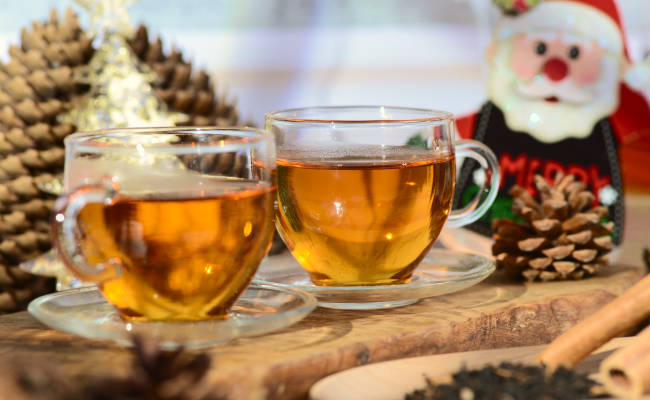
Green Tea vs. Black Tea: What’s the Difference?
Wondering what makes green tea different from black tea? The secret lies in oxidation — the natural process that changes both the colour and flavour of the leaves. Though they come from the same tea plant, their processing methods create completely different aromas, tastes, and health benefits.
It All Starts with the Same Leaf
All traditional teas come from the same plant — the Camellia sinensis, a perennial evergreen shrub. Whether a tea becomes green or black depends entirely on how it’s handled after the leaves are picked.
So while the leaves may start out the same — fresh, tender, and full of life — their journey after harvest changes everything: the colour, aroma, and taste you experience in your cup.

What Makes Black Tea “Black”
Black tea (known as hong cha, or “red tea” in Chinese) goes through full fermentation, a natural oxidation process that transforms the tea’s character.

Here’s what happens:
-
Withering: Freshly picked leaves are left to soften and lose some moisture.
-
Rolling or Cutting: The leaves are gently rolled or cut to release enzymes and essential oils.
-
Fermentation (Oxidation): The magic moment! Oxygen interacts with the tea leaves, turning them from bright green to a deep reddish-brown.
-
Drying: The leaves are carefully dried to lock in flavour and aroma.
During fermentation, over 90% of the tea’s natural polyphenols transform into new compounds such as thealevins and thearubigins — these give black tea its signature amber hue and smooth, mellow taste.
Explore our Black Tea Collection
What Makes Green Tea “Green”
Green tea, on the other hand, is unfermented — it skips the oxidation step completely. Instead, the leaves are quickly heated after harvest to stop the enzymes from reacting with oxygen.

This process (called fixation) preserves the tea’s natural green colour and most of its antioxidants, vitamins, and caffeine. Typically, green tea goes through three main stages:
-
Fixation: The fresh leaves are heated in a wok or steamed to halt oxidation.
-
Rolling: The leaves are shaped and gently twisted.
-
Drying: They’re dried carefully to maintain flavour and freshness.
The result is a tea that’s bright in colour and crisp in taste — a little grassy, slightly sweet, and full of life.
Flower-scented teas, like Jasmine Green Tea, also belong to the green tea family — they’re made by blending unfermented green tea with fragrant blossoms.
Discover our Green Tea Collection
Taste and Aroma: A Tale of Two Teas
The biggest difference between green and black tea is how they make you feel.
-
Black Tea tends to be smoother and rounder. Its rich fermentation process softens the natural tannins that create a dry mouthfeel, making each sip warm and mellow.
-
Green Tea, on the other hand, offers freshness and brightness. Because its essential oils remain intact, green tea has a more floral, grassy aroma that feels vibrant and alive.

Think of it this way: if black tea is a comforting hug, green tea is a breath of fresh air.
So, why not explore both?




